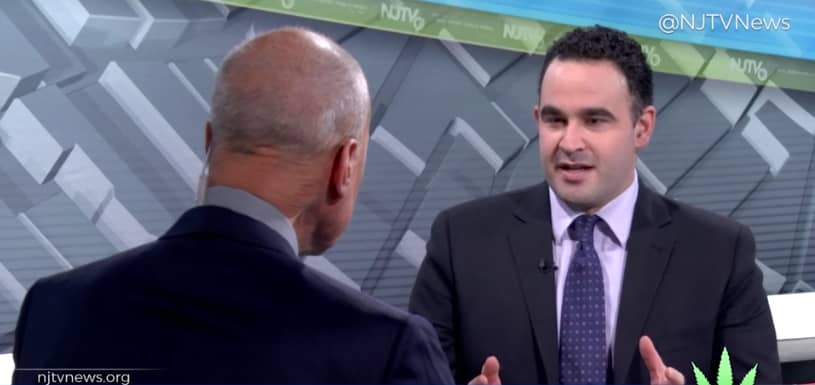“I didn’t smoke no grass today
But that’s ’cause I’m the one on stage
[…]
Does the grass look greener on my side of the speakers?
I tried a couple weekends, but that green’s not for me”
When the song “No Grass Today” was released by AJR in 2017 as part of their sophomore album The Click, some fans were unsure if the lyrics were alluding to marijuana. In fact, even though the lyrics include words such as ‘grass,’ ‘lighting up,’ and ‘hit’ 17 different times, there were hundreds of searches questioning the meaning of the lyrics. As a certain Anonymous commented on lyricinterpretations.com: “I don’t believe that this is mainly about drugs.”
Funnily enough, the same kind of confusion can be felt when the green grass most commonly associated with the hippies of the ‘60s and ‘70s is still adamantly shunned as taboo by middle-aged politicians who ceaselessly make inaccurate claims about cannabis. One such individual who dedicates a sizable portion of his professional life to restricting the freedom to smoke marijuana is Kevin Sabet, a member of the lobby group NJ RAMP fighting marijuana legalization in New Jersey. Sabet sat down with a political correspondent at NJTV News to argue in favour of a 2018 marching order that enforced federal law to keep marijuana illegal.
In the interview, Kevin Sabet made flawed claims about marijuana in an attempt to fear monger and present cannabis as an immensely dangerous and uncontrollable substance. His conclusions about the connection of marijuana to fatal traffic crashes, toxic THC levels, drug harms, and mental illness are imprecise and easily disprovable with scientific research.

“[Politicians] see what’s happened in Colorado, more car crashes, more people using” (1:10)
Sabet claims that there has been an increase of car crashes related to the legalization of recreational cannabis use. The data, though, shows that the connection is not as straightforward.
In the report “The Legalization of Marijuana in Colorado: An Impact,” the Rocky Mountain High Intensity Drug Trafficking Area presented multiple studies exploring the impact that marijuana legalization had on the state of Colorado. The report described that, after recreational use of marijuana was legalized in Colorado in 2013, “college‐age past month marijuana use increased 17 percent.” These same statistics measured in Colorado increased by only 2 percent nationally, showing the same trend as drivers testing positive for marijuana in Colorado compared to the national numbers.
Vanessa Schipani, an accredited science journalist, presented multiple studies in a FactCheck.org article also discussing marijuana legalization in the state of Colorado. She first explains that “marijuana and other drugs, such as cocaine and prescription painkillers, can stay in a person’s system for a few days, so the presence of the drug alone is not necessarily an indicator of intoxication.” A study by the National Highway Traffic Safety Administration (NHTSA) found no significant crash risk associated with marijuana after researchers controlled for variables like gender, age, and alcohol concentration. According to supporting data from the NHTSA, 67% of drivers involved in fatal traffic crashes who tested positive for marijuana also tested positive for at least one other drug, including alcohol.
In conclusion, one possible explanation for the increase in fatal crashes connected to marijuana use could be tied back at least partly to the simple fact that more people in Colorado are using marijuana in general. Additionally, studies have shown that many of these incidents where drivers tested positive for marijuana also tested positive for other drugs— which is the factor that creates the significant crash risk.
“Today’s products […] don’t resemble the old, you know, your dad’s weed, of the past. I worry that these things being sold on Main Street is a very bad idea” (4:44)
Sabet claims that today’s marijuana has much higher levels of THC than it did 20 years ago when there was less concern about the danger of smoking weed and that this makes it more dangerous now. It is certainly true that marijuana has higher levels of THC today than it did in previous years. It is extremely important to note, though, that these higher levels are a direct consequence of the illegalization of marijuana. This trend very closely mirrors alcohol potency levels during alcohol prohibition in the 1920s and ‘30s. Similarly to what happened after the repeal of Prohibition, the legalization of marijuana would make safer, ‘weaker’ marijuana much more available to be “sold on Main Street.”
Mark Thornton, who, at the time was an assistant professor of economics at Auburn University, authored a policy analysis on Prohibition. As part of his analysis, he illustrated why the alcoholic drinks available became much more potent after the ban of alcohol: “Prohibition made it more difficult to supply weaker, bulkier products, such as beer, than stronger, compact products, such as whiskey, because the largest cost of selling an illegal product is avoiding detection.” The paper cites a graph from Licensed Beverage Industries measuring spending on distilled spirits as a percentage of total alcohol sales from 1890 through 1960. The graph shows the quick acceleration of spending on distilled spirits— a more potent form of alcohol —following the enactment of Prohibition and a countering deceleration following its repeal. The potency of alcoholic drinks during the Prohibition era are judged to be 150% higher than the potency of drinks produced outside of this era, which means that the potency of drinks dramatically lowered after the legalization of alcohol.
“Today’s THC, high THC product, can be contributing to mental illness” (6:07)
Sabet claims that marijuana use is encouraging the development of mental illnesses in long-term users. Yet marijuana is not linked to any mental illnesses other than a minor link to the development of psychosis in some cases. Even then, using marijuana only quickens the process of developing psychosis in people who already had a high genetic probability of developing it eventually without intervention.
The National Institute on Drug Abuse created the “Marijuana Research Report” examining the effects of marijuana use through data science. Data from the “National Epidemiological Survey on Alcohol and Related Conditions” studied associations between marijuana use, mood and anxiety disorders, and substance use disorders. The data concluded that “after adjusting for various confounding factors, no association between marijuana use and mood and anxiety disorders was found.” The only association found was in the overlap of marijuana use and a pre-existing gene variant in people. According to the findings, “people who use[d] marijuana and [carried] a specific variant of the AKT1 gene, which codes for an enzyme that affects dopamine signaling in the striatum, [were] at increased risk of developing psychosis.” People at high risk of developing psychosis when using marijuana were those already predisposed to developing it without intervention.
“Do we really need to legalize […hurting] the weakest in society?” (5:10)
Sabet claims that cannabis hurts society because it is dangerous and unhealthy. But all drugs are dangerous and unhealthy. The only way to compare its danger is with other drugs, especially legal ones like alcohol and tobacco. When this is done, it is shown over and over again that cannabis is less harmful than alcohol and tobacco in multiple ways— including individual and societal harm and death rates.
“Drug Harms in the UK: A Multicriteria Decision Analysis” was a report co-authored by Dr. David Nutt, a globally respected neuropsychopharmacologist. The purpose of the report was to reevaluate the criteria used to assess drug harms. Twenty drugs were ranked from most to least harmful using 16 criteria, such as “a drug’s effects on users’ physical and mental health, social harms including crime, ‘family adversities’ and environmental damage, economic costs and ‘international damage.” The drugs were scored out of 100 points with higher values representing greater harm. Alcohol ranked first as the most harmful drug with a ‘harm score’ of 72 while tobacco ranked sixth with a score of 27. On the other hand, cannabis ranked eighth with a score of 20.
Another report, “The Global Statistics on Alcohol, Tobacco and Illicit Drug Use” examined up-to-date information about alcohol and tobacco compared with drugs still widely illegal. The 17 authors of this report include many experts from various countries specializing in epidemiology, drug use, and addiction. The first two authors are Amy Peacock, a senior research fellow at the National Drug and Alcohol Research Centre of Australia, and Janni Leung, a widely-cited professor of epidemiology specializing in substance use disorders. The investigation finds that “THC/cannabis in both individual and population-based assessments would be above safety thresholds” in relation to morality. Cigarettes had a death rate of 110.7 per 100,000 people. Alcohol’s death rate was 33 per 100,000 people. In contrast, illicit drugs— which include cannabis, heroin, cocaine, and more —only accounted for 6.9 deaths per 100,000 people. The findings conclude “that the risk of cannabis may have been overestimated in the past” and the risk of alcohol “commonly underestimated” in modern policy. “Smoking and alcohol are always well ahead [of illicit drugs], there’s nowhere that it even comes close,” Professor Robert West of University College London, another co-author of the study, told The Independent.

Why does this matter?
It is important to point out erroneous claims about any issue— but especially so with complicated controversial issues directly affecting modern society such as the topic of marijuana legalization.
Conclusively, marijuana is a drug. That means that it will never present no danger whatsoever to the human body. Legal drugs like cigarettes, alcohol, and even coffee are culturally-normalized addictive substances. Legalization does not make the dangers of any drug disappear. Instead, it takes responsibility for the risks associated with it through laws and regulation.
The link between cannabis and fatal traffic crashes is not as significant or straightforward as Kevin Sabet claims it is. Modern marijuana contains higher THC levels simply because it is easier to smuggle potent products. The drug harms of cannabis are notably lower than those of other legalized drugs. And there is no link between cannabis and mental illness outside of predisposed genetic variants.
Even the musical mastermind of Jack Metzger from AJR could not help but end “No Grass Today” in such a way:
“I didn’t smoke no grass today
But that’s because I love to play
[…]
You wanna hit? It’s your choice
But please enjoy the show”
Featured video can be found at NJ Spotlight News.
Featured image is a screenshot from “The Argument Against Legalizing Marijuana.”





What do you think?
Show comments / Leave a comment